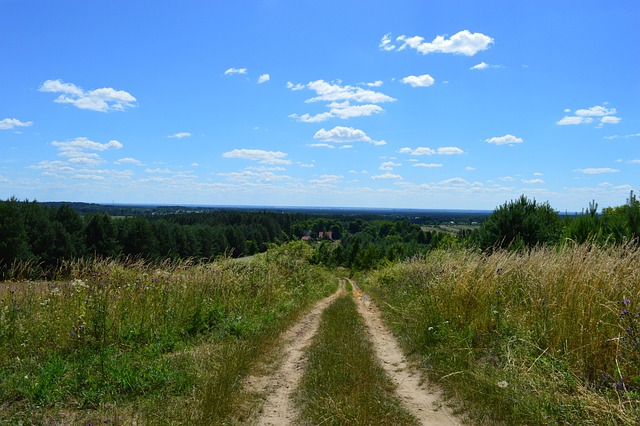Residential clover mite infestations can be managed through integrated pest management strategies focusing on prevention and natural treatments. Start with regular yard maintenance, eliminating hiding spots, and adjusting mowing/watering practices. For severe cases, consider chemical treatments sparingly or opt for eco-friendly methods like essential oils and natural predators. Strategic landscape design deterring mites with diverse plants, shade, and physical barriers is recommended. Combine these with seasonal maintenance, prompt inspections, and cultural control methods for effective, long-term residential clover mites treatment.
Landscaping can be a powerful tool in the battle against residential clover mites—those pesky critters that can transform your outdoor space into a bustling enigma. This article explores effective strategies to minimize clover mite populations naturally and with chemical treatments, offering insights into behavior, habitat, and landscape design. Learn how seasonal maintenance and preventive techniques can keep these mites at bay, ensuring a more comfortable outdoor environment. Discover the game-changing approach to residential clover mites treatment through well-planned landscapes.
Understanding Residential Clover Mites: Behavior and Habitat
Residential clover mites are a common pest in many areas, known for their tiny size and ability to infest homes, particularly during the warmer months. Understanding their behavior and preferred habitats is key to effective treatment. These mites are highly adaptive and often seek shelter in cracks, crevices, and corners of residential buildings. They are attracted to moisture and organic debris, making yards with ample vegetation, especially lawn clippings and fallen leaves, ideal breeding grounds.
The resilient nature of clover mites makes them hard to eradicate once established. They can quickly multiply, forming large colonies beneath siding, in attics, or within wall voids. To effectively treat residential clover mite infestations, it’s crucial to address their hiding spots and breeding areas. Regular maintenance, including keeping yards clean and well-drained, is essential for preventing future invasions.
Chemical vs. Natural Treatment Options for Clover Mites
When it comes to tackling clover mites, homeowners have several options, including chemical and natural treatments. Chemical treatments, while effective, often involve pesticides that can be harmful to both the environment and beneficial insects. These methods are typically reserved for severe infestations when other strategies prove ineffective.
Natural treatments, on the other hand, offer a more eco-friendly approach. They include cultural controls like proper mowing and watering practices, as well as biological options such as introducing natural predators (e.g., spiders and ladybugs) or using essential oils known to deter mites. For residential clover mite treatment, starting with natural methods is often recommended to mitigate potential environmental impact while effectively managing the pest population.
Landscape Design Strategies to Deter and Control Populations
In the quest to minimize residential clover mite populations, strategic landscape design plays a pivotal role in deterring and controlling these pesky intruders. By understanding their behavior and preferences, homeowners can create an environment that discourages their presence. One effective approach is to incorporate diverse plant species into the garden, favoring those that are less appealing to clover mites. For instance, choosing plants with harsher textures or strong scents can act as natural repellents. Additionally, maintaining a well-trimmed landscape with regular weeding reduces hiding spots and food sources for these pests.
Another strategic design element involves manipulating sunlight exposure. Clover mites thrive in warm, sunny conditions, so strategically planting dense shrubs or trees to provide shade can significantly reduce their habitat. Furthermore, creating physical barriers like landscaping rock or gravel paths can hinder their movement, making it harder for them to access certain areas of the garden. These integrated pest management strategies not only effectively control clover mite populations but also contribute to a more aesthetically pleasing and eco-friendly outdoor space.
Seasonal Maintenance and Prevention Techniques for Effective Management
Seasonal maintenance plays a crucial role in the effective management of residential clover mite populations. During the active season, regular inspections and quick responses are key. This involves identifying and treating infested areas promptly with appropriate pesticides or natural repellents. Maintaining a clean landscape by removing dead plant matter and mowing regularly can significantly reduce mite habitats. Additionally, seasonal rotations of plants and crop choices can help disrupt their life cycles.
For long-term prevention, implementing cultural control methods is essential. This includes improving air circulation around plants, ensuring proper irrigation to minimize moisture, and using resistant plant varieties when possible. Applying organic barriers like diatomaceous earth or neem oil during the early stages of mite activity can also be effective. These preventive measures, combined with seasonal maintenance, provide a comprehensive residential clover mites treatment approach, ensuring a healthier and less infested garden throughout the year.
By implementing a combination of chemical and natural treatment options, along with strategic landscape design, homeowners can effectively manage and minimize residential clover mite populations. Seasonal maintenance and proactive prevention techniques are key to long-term control, ensuring these pesky mites don’t take over your outdoor space. For effective residential clover mites treatment, it’s essential to understand their behavior, choose the right tools, and maintain a balanced ecosystem.
